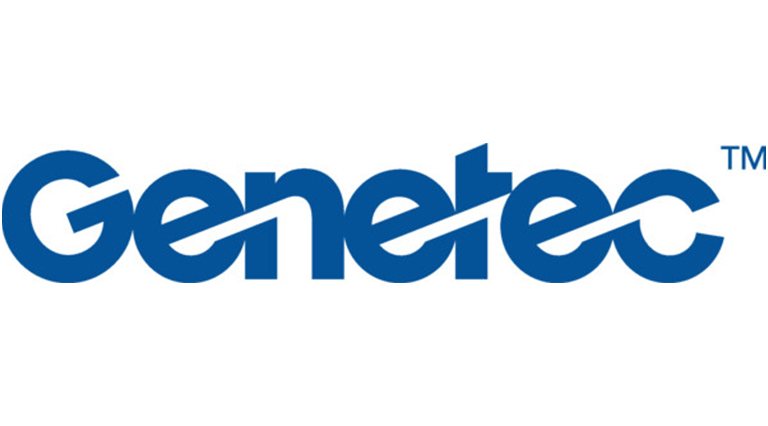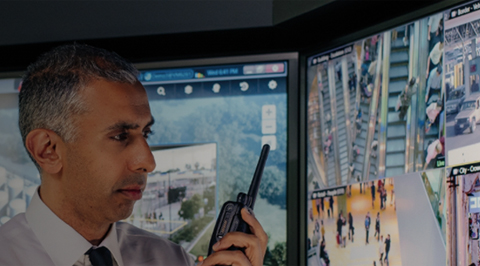In 2022, the lasting effects of the pandemic and other geopolitical events will drive new technological shifts and considerations, according to Genetec. “Some of the top physical security trends to watch out for include the standardization of open and interoperable solutions across smart cities, faster hybrid cloud adoption, and a sharper focus on supply chain risks,” it says in a press release this week.

1. Monitoring occupancy and space utilization will remain a top priority
Within months of the pandemic, businesses were deploying different solutions to track occupancy in their buildings and control social distancing. Almost two years later, this trend is still growing because they’re seeing value from the data collected.
Beyond safety objectives, organizations are using spatial analytics data to reduce wait times, optimize staff scheduling, and enhance business operations.
Corporate offices are also finding ways to optimise their workplaces as they give employees the flexibility to split up their work time between the office and home. This space utilization intelligence helps them better track employee office attendance, monitor meeting room demands, or make informed floorplan changes such as adding more desk-sharing options.
All of this leads to higher operational efficiencies, effective resource management, and big cost savings.
2. Video analytics will become more viable for large-scale deployments
The problem is that deploying analytics at an enterprise level isn’t always practical. Complex video analytics still require very powerful servers for adequate data processing, making them less feasible on a larger scale deployment. This leaves larger businesses questioning whether the investment in analytics justifies the outcome.
As we move into 2022, we believe video analytics applications will mature in ways that make them easier and more economical to deploy at scale.
This will be made possible by vendors who focus on hardware resource efficiency and offer more granular controls for running analytics at certain intervals or schedules, instead of continuously.
3. Cybercrime will continue to grow and inspire new strategies
A report by Cybersecurity Ventures predicts that global crime costs will reach US$10.5 trillion annually by 2025. With a growth rate of 15 per cent per year, this is said to represent the greatest transfer of economic wealth in history.
As we continue to see more devices come online, and data processing becomes central to operations, businesses will need to remain agile and responsive to the evolving threat landscape. Businesses also need to offer greater transparency to meet customer expectations of keeping their data private and secure.
All of this will usher in a new model for cybersecurity that relies on continuous verification rather than just hardening networks and systems.
With this in mind, building layers of protection into a security ecosystem won’t be enough. Decision-makers will also be looking to implement more offensive cybersecurity strategies and choose partners who offer higher levels of automation to stay on top of potential threats.

4. Open architecture will help catalyze the smart city movement
According to a report titled IDC FutureScape: Worldwide Smart Cities and Communities 2021 Predictions, smart city investments will increase to US$203 billion by 2024. These smart cities are collecting vast amounts of data and want to capitalize on this information to keep improving urban safety and liveability.
Intelligent buildings are also integral to the smart city’s ecosystem. Whether airports, hospitals, or corporate offices, various organizations are seeking to analyze data from multiple sensors and automate processes.
The challenge is that embracing digital transformation and automation requires cities and businesses to move away from proprietary solutions. The closed-architecture model innately creates human and data silos and stifles growth opportunities.
Looking ahead, many public and private sector decision-makers will focus on open and interoperable solutions. This will help them get the most value from existing technology investments by strengthening data sharing and collaboration. Longer-term, they’ll also become more agile to evolving requirements and more autonomous with data unification and ownership goals.
5. Businesses will keep embracing adaptable access control technology
Organizations today expect more from their access control solutions. Not only are they demanding more flexibility in hardware choices, but they also want to streamline processes and offer more convenience to those who move through their buildings every day.
During the pandemic, many businesses also had to get creative in managing new health and safety mandates.
Today, no matter where organizations are on the return-to-office spectrum, they understand that the new normal requires adaptability. This is why they’re investing in physical identity access management (PIAM) solutions.
With a self-service PIAM system, businesses can automate employee and visitor access requests and remotely adjust access rights for all employees to better ensure safety and compliance. And by unifying access control and PIAM systems, onsite movement can be tracked, making it easier for organizations to identify potential COVID-19 transmission.
As the new year unfolds, we believe this trend towards more modern and adaptable access control technology will continue to grow.
6. Supply chain operations will gain more focus and attention
As cyber attacks become more sophisticated and global disruptions affect supply management everywhere, organizations are under a lot of pressure to scrutinize their entire supply chain ecosystem.
Looking back throughout 2021, we saw how the Taiwanese computer and electronics supplier, Quanta, became the source of a data breach for the latest Apple products. And during the SolarWinds Attack, a vulnerability in their own IT resource management system exposed over 18,000 customers including Fortune 500 companies and US government agencies to malware.
In a world where organizations no longer have clearly defined network perimeters, we’ll see more businesses and government agenciesbroadening the scope of their cybersecurity policies to establish baseline security standards for the solutions they purchase and the vendors they partner with.
Any supply chain challenges in acquiring physical security equipment will also force businesses to be less dependent on single-source, proprietary solutions. This will give decision-makers the freedom to browse other vendor solutions and easily swap out system components, should product availability, best practices, or lack of transparency come into question for a particular vendor.
7. More organizations will make the move to the Cloud and embrace a hybrid deployment
Cloud adoption is accelerating. And while organizations might not be prepared to fully transition to the cloud, many are opening up to the hybrid cloud deployment model as an opportunity to trial new applications.
This could include implementing a digital evidence management system to speed up video and data sharing between different departments during investigations, deploying a cloud video management system to secure a high-risk remote location, or installing a PIAM system to better manage access rights for all employees.
As more physical security teams take a step towards trialing cloud applications, they’ll quickly understand the benefits of hybrid cloud. That will produce even greater forward momentum in the adoption of cloud technologies this year.
About Genetec
Genetec Inc. is an innovative technology company with a broad solutions portfolio that encompasses security, intelligence, and operations. The company’s flagship product, Security Center, is an open-architecture platform that unifies IP-based video surveillance, access control, automatic license plate recognition (ANPR), communications, and analytics. Genetec also develops cloud-based solutions and services designed to improve security, and contribute new levels of operational intelligence for governments, enterprises, transport, and the communities in which we live. Founded in 1997, and headquartered in Montreal, Canada, Genetec serves its global customers via an extensive network of resellers, integrators, certified channel partners, and consultants in over 80 countries. Discover more HERE https://www.genetec.com/
27 December 2021
By Gary Wright